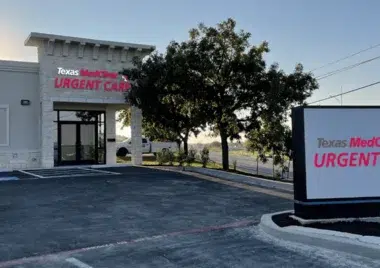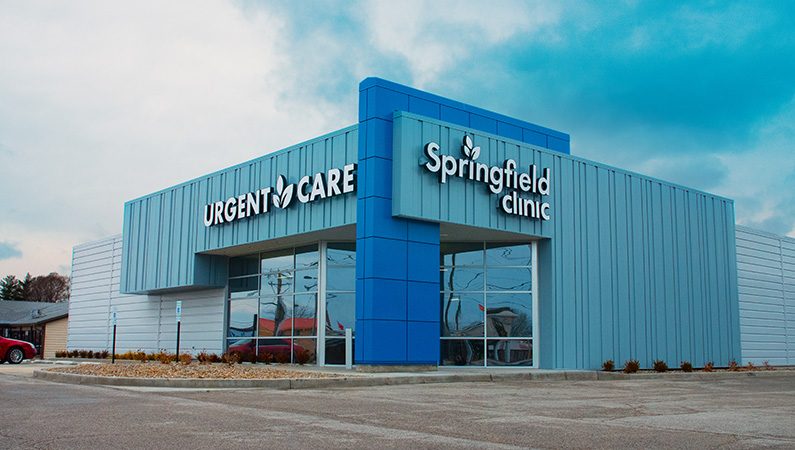Finding the Most Efficient Clinic for Your Urgent Care Needs
Finding the Most Efficient Clinic for Your Urgent Care Needs
Blog Article
Comprehending the Role of Urgent Treatment in Offering Timely Therapy for Non-Life-Threatening Problems
Urgent care facilities have arised as a crucial element of the healthcare landscape, dealing with the prompt requirements of patients with non-life-threatening problems. Understanding the nuances of immediate care might significantly affect patient results and the total effectiveness of medical care delivery.
What Is Urgent Care?
Urgent treatment describes a category of clinical solutions designed to attend to non-life-threatening problems that require instant focus. These centers function as an intermediary between health care doctors and emergency clinic, providing a hassle-free option for clients that require prompt care without the considerable waiting times usually connected with emergency departments.
Immediate treatment centers are generally staffed by physician, including doctors, registered nurse professionals, and doctor aides, who are trained to identify and deal with a vast selection of problems. Usual services provided by these centers include therapy for small injuries, illnesses, and infections, as well as diagnostic tests such as X-rays and research laboratory work.
In addition, urgent treatment facilities usually approve walk-in individuals, eliminating the demand for consultations. On the whole, urgent treatment plays an important duty in the medical care system, ensuring individuals can access vital clinical solutions promptly and successfully.

When to look for care at an immediate care facility instead of a key care doctor or an emergency area,Numerous people may locate themselves unsure about. Immediate care is made to deal with non-life-threatening problems that require punctual attention yet are not severe sufficient to warrant an emergency clinic see.
Typically, one need to think about immediate take care of problems such as small fractures, strains, cuts calling for stitches, or infections like urinary system infections. In addition, cold or flu signs and symptoms, rashes, and sensitive responses can also be properly handled in this setup.
It is essential to keep in mind that immediate treatment is not suitable for serious emergencies, such as chest discomfort, trouble breathing, or serious blood loss, which demand instant emergency clinic treatment.
People that lack access to a main treatment medical professional or can not secure a timely appointment may likewise gain from urgent care services. Ultimately, understanding when to use urgent care can cause extra reliable medical care distribution, permitting people to get the appropriate level of care based upon their specific health needs.
Benefits of Urgent Care Centers
Choosing urgent treatment facilities for non-life-threatening conditions supplies several advantages that improve client experience and ease of access. One main benefit is the minimized delay times compared to conventional emergency rooms. Immediate treatment facilities commonly run on a first-come, first-served basis, enabling clients to receive timely clinical focus without the long delays often connected with medical facility settings.
Additionally, immediate care centers give prolonged hours, including evenings and weekend breaks, suiting clients with varying timetables. This versatility guarantees that individuals can look for care when it is most hassle-free for them, additionally promoting prompt treatment.

Furthermore, these facilities usually supply a thorough series of services, including small procedures and analysis examinations, all under one roofing system. This combination of solutions not only streamlines the person experience however also cultivates a much more cohesive strategy to handling non-life-threatening health problems, inevitably profiting general patient end results.
Common Problems Treated
At urgent care centers, a selection of non-life-threatening conditions can be properly treated, supplying patients with obtainable and timely medical help. These centers are especially skilled at attending to concerns that require timely focus but do not position a prompt threat to life or limb.
Usual conditions treated at urgent treatment facilities consist of small injuries such as cracks, strains, and stress. Additionally, they handle ailments like colds, influenza, and infections, consisting of urinary system system infections and sinus problems. Skin problems, ranging from rashes to insect bites, are also frequently attended to. Immediate treatment facilities are furnished to do essential analysis examinations, such as X-rays and research laboratory examinations, allowing them to give thorough treatment.
Furthermore, immediate treatment providers can carry out inoculations, assisting to avoid the spread of transmittable illness - Urgent Care. They also offer solutions for minor treatments, such as suturing wounds or draining abscesses. By offering these varied services, immediate treatment centers play an essential function in bridging the void in between primary treatment and emergency solutions, making sure clients obtain timely therapy for Read Full Article a vast array of conditions without the demand for long delay times normally connected with emergency clinic
How Urgent Treatment Supports Health Care System
Immediate care facilities play an important role in sustaining the total health care system by relieving the concern on emergency situation departments and giving timely accessibility to medical care for non-life-threatening problems. By handling situations such as small injuries, infections, and illnesses, immediate care facilities permit emergency departments to concentrate on even more crucial people requiring instant focus.
Moreover, urgent treatment facilities enhance health care accessibility, providing extensive advice hours and an extra convenient option to typical primary care settings. This accessibility is specifically beneficial for individuals that might not have a regular physician or that call for instant treatment beyond normal workplace hours. As an outcome, immediate treatment facilities efficiently minimize wait times and boost person satisfaction.
Additionally, urgent care facilities add to set you back financial savings for both clients and the medical care system by giving lower-cost solutions contrasted to emergency situation divisions. This financial efficiency is crucial in a period of increasing health care expenses, allowing clients to receive necessary care without incurring exorbitant expenses.
Verdict
To conclude, immediate care centers play an essential duty in the health care system by providing prompt therapy for non-life-threatening problems. By connecting the gap in between medical care and emergency clinic, these centers make sure that clients receive prompt clinical interest without the lengthy delay times commonly connected with emergency divisions. The availability and performance of urgent care facilities contribute significantly to relieving the general burden on medical care sources, improving individual outcomes, and promoting Find Out More an extra effective medical care shipment system.
Immediate care facilities have emerged as an essential element of the medical care landscape, resolving the prompt needs of patients with non-life-threatening problems. Urgent treatment gos to usually incur reduced out-of-pocket expenses compared to emergency department visits, making care extra inexpensive for individuals without compromising high quality. Immediate care facilities are outfitted to carry out needed analysis tests, such as X-rays and laboratory examinations, enabling them to give comprehensive care.
By using these varied services, urgent care centers play a crucial duty in bridging the space in between key treatment and emergency services, making sure patients get prompt therapy for a broad variety of problems without the need for lengthy delay times commonly linked with emergency spaces.
Additionally, immediate treatment centers improve healthcare ease of access, offering extensive hours and a much more hassle-free choice to conventional main treatment setups.
Report this page